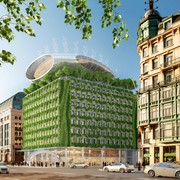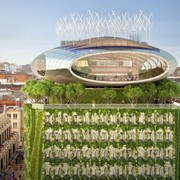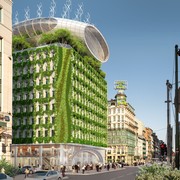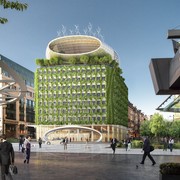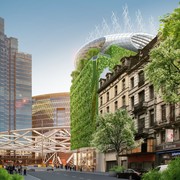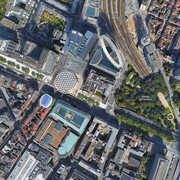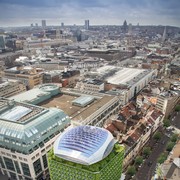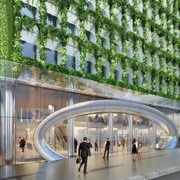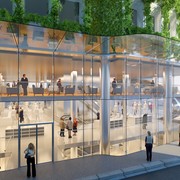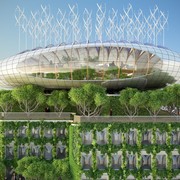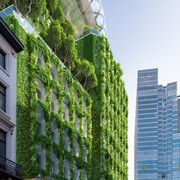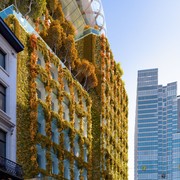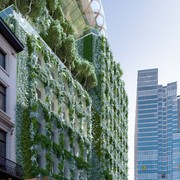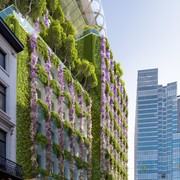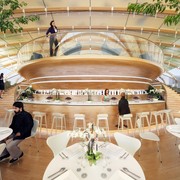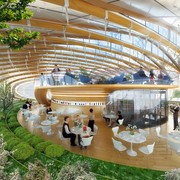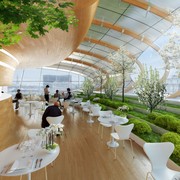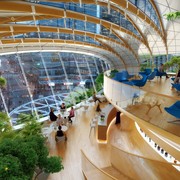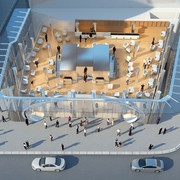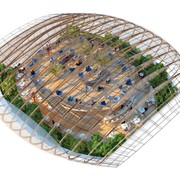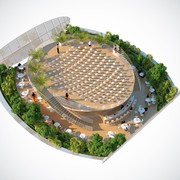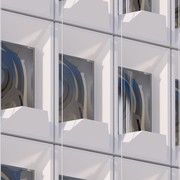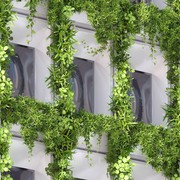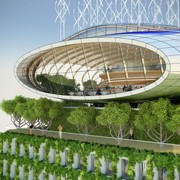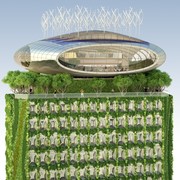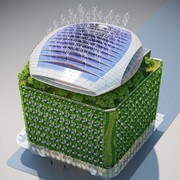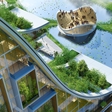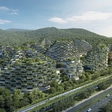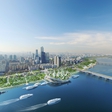
Envisioning a project that brings together architectural heritage and contemporary, green design.
Vincent Callebaut Architectures, the famed Belgian architecture studio that has already presented awe-inspiring sustainable concepts such as Hyperions, Aequorea, and Asian Cairns among many others, now presents another green concept project, which is to be set up in Brussels, Belgium.
As explained by the studio, the current façade doesn't seem to at all reflect the birth name of the building, related to the nearby botanical garden, Jardin Botanique. Hence, the 1977-built Botanic Center apartment block is now getting an enormous make-over to literally bloom in all its glory. Using photosynthesis to absorb the carbon particles contained in the urban smog, while integrating advanced renewable energies that address the project's own needs, was the most obvious way to achieve the wanted results - the fittingly named Botanic Center Bloom.
The studio's vision includes putting a so-called vegetal envelope on the three façades of the Botanic Center with overhanging and climbing plants that will change the color of the building according to the changing seasons. To achieve this, they will see 274 planter beds directly integrated into the 274 existing modules of the façades. They estimate that the photosynthesis of the 10,000 plants covering the façades and green roofs could capture approximately 50 tons of carbon dioxide every year and increase the building's thermal inertia.
Perhaps the most intriguing new feature of the building is Chrysalis, a rooftop structure with the top side made of 12 gills that capture sunlight. 600 m² solar shield helps generate more than 96,000 kWh/year, and is supplemented by a 42-VAWT wind turbines. Producing total annual output of renewable energies is therefore 128,340 kWh/year, so the building can partly cover the current building's energy needs or make the newly-built spaces inside the Chrysalis completely self-sufficient.
Bloom is still in its design phase, so we currently have no information on when its construction is set to begin.
